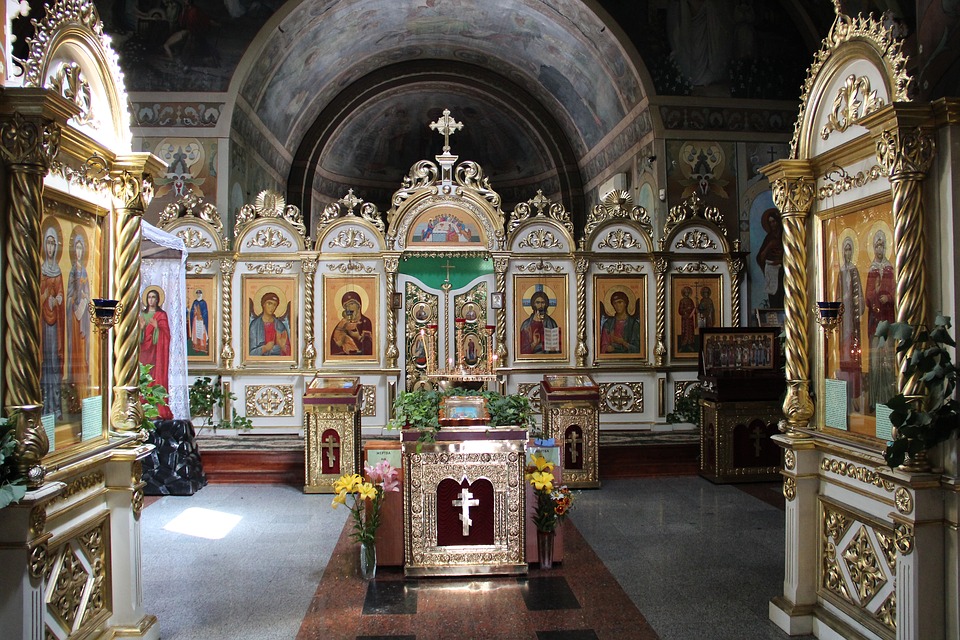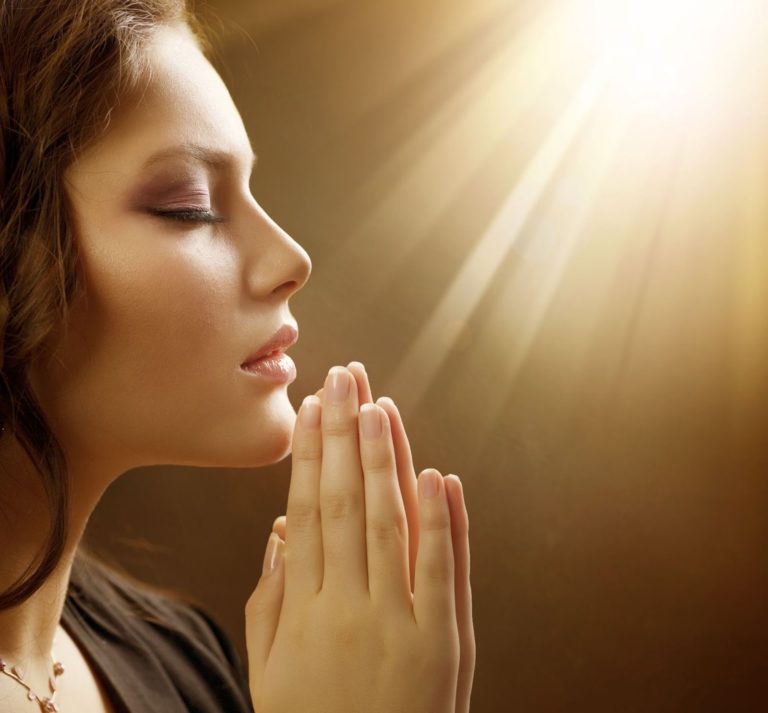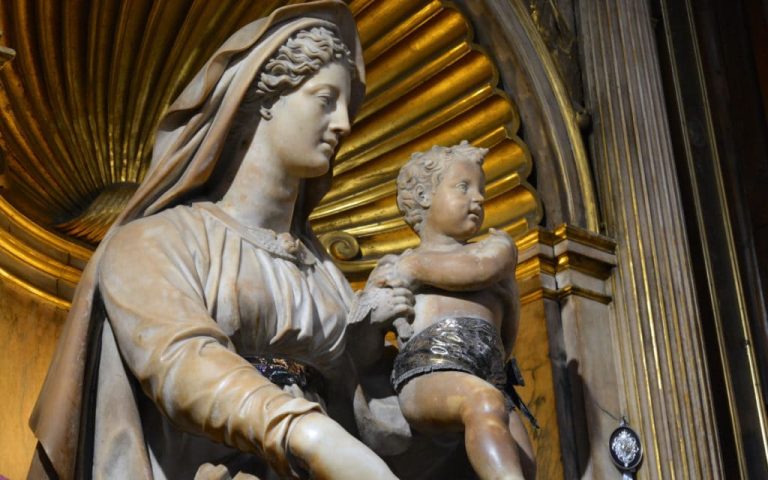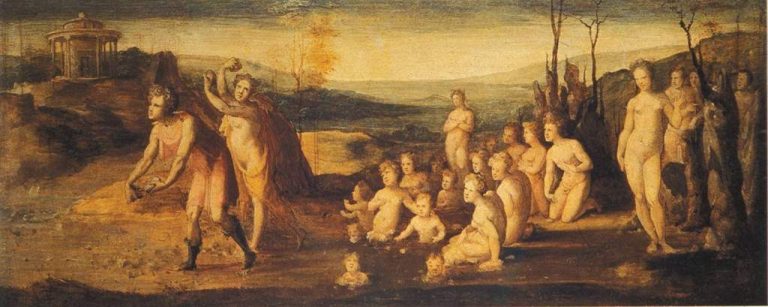Learn all about the History of the Orthodox Church, here
The history of the Orthodox Church, is related to schemes to a Christian confession, which has elements of traditional antiquity that are aligned to Jesus and the twelve apostles. It is characterized by having an apostolic succession that has no interruption. This is the second Christian church with the most followers in the world, after the Catholic Church. The number of followers is between 225 and 300 million faithful.
History of the Russian Orthodox Church
The history of the Orthodox Church focuses on the leadership of the Patriarch of Moscow and all Russia, who in turn is linked to the fourteen Patriarchs of the Eastern Orthodox Churches. It is described as an autocephalous Christian church, made up of an Orthodox community.
It should be noted that the Russian Orthodox Church is considered the church of this rank, in the East of greatest importance in the world, within this category all autocephaly churches are included. They contain a number of believers greater than 150 million worldwide. About half of the faithful are in the Eastern Orthodox Church.
His theological doctrine originated through a series of councils, within which, those with the highest rank are the so-called first seven councils. These are ecumenical appointments that were made between the fourth and seventh centuries.
The Orthodox Church originates after conflicts with the Catholic Church. The Catholic and Orthodox churches separate after the so-called Schism of East and West on July 16, 1054.
Most Russians consider themselves to be Orthodox Christians. Belarusians and Ukrainians identify as Orthodox. It is important not to confuse the Orthodox Church in America with the autonomous part of the Russian Orthodox Church found in North America since the time of the Russian Orthodox missionaries who were in Alaska in the 18th century.
The oldest first Russian Orthodox church is called Holy Trinity Cathedral in San Francisco, after the Russian revolution in 1920 in America. On the other hand, the Russian Orthodox Church outside Russia, which is also known as the Foreign Russian Orthodox, was established in 1920, by Russian communities outside of communist Russia, after the denial of recognition of the patriarchal authority of Moscow.
Evolution
It is in this way that it is expressed that the history of the Orthodox Church indicates that between the 8th and 11th centuries, the definitive development of the Orthodox Church in Greece took place, defined around the figure of the Patriarch of Constantinople. In the year 451 the maturation of the eastern patriarchs known in the Council of Chalcedon in Alexandria, Jerusalem and Antioch takes place. However, these lost importance because their territory was dominated by the Islan.
In addition to this, relations with Rome were moving away, despite this there were still certain elements that allowed it to be frequent. On the other hand, the Pope was focused on addressing the new facts of Western Christianity. Despite this, movements were still exercised by the Popes from the east of Greece to Syria, thanks to the exarchate of Ravenna.
In addition to this, it is important to note that most of the Precismatic Popes who are classified as Saints who are part of the Catholic Church before 1054, are also sanctified by the Orthodox Church, as is the case of Saint Martin I, Saint Clement I and Saint Agapito I.
The Eastern episcopate recognizes the Bishop of Rome as an honorary primate, however, it considers that doctrinal decisions should be made by the Patriarchs of each church of Orthodox belief. These cannot abandon the essence of the orthodox ecumenical position, despite the rise that the Roman primacy may have and its evolution from the 8th century.
development of rome
Rome was not willing to accept money from her empire, as she was subject to the rules of the church in the Byzantine Empire. They had a symphonic idea of the power of the Emperor and the Patriarch.
They developed under the understanding of different points of view that are understood under reasons that culminated in the formation of separation of belief forming two churches.
On the other hand, they had dogmatic divergences that had liturgical elements, where distinctive factors were formed that allowed different ways of understanding religiosity to exist.
The use of different languages allowed different liturgical calendars with saintly elements of specific elements. That cause different factors in terms of the cult of icons and canons with diversity. Among the most common demonstrations is the Quinisexto Council held in 692, where the Pope of Rome refused to approve.
In addition to this, there are differences to elements such as priestly celibacy. On the other hand, the Ecumenical Councils that took place in the East, where the Pope’s legates were present, was Nicaea, which took place in the year 787 and in Constantinople in the year 869. It is after that that it begins with the rupture that originates after the confrontation between Patriarch Forcio and Pope Nicholas I.
It is from there that the doctrine of the Roman Catholic, denominates the Orthodox as forcians. After that the Byzantine church and those made after the conflicts were started by their own elements of councils and synods.
What is?
The Orthodox Church is considered the heir to all the Christian communities found in the middle of the eastern Mediterranean. It has a theological doctrine that is established in a series of councils, in which the first seven councils stand out. The Orthodox Church is created after several conflicts with the Catholic Church.
Orthodox Christianity spread throughout Eastern Europe, after the prestige of the Byzantine Empire and the work of numerous groups of missionaries. (Learn more about where God is )
The Orthodox Church has 14 autocephalous churches that have a power of hierarchical authority, as is the case of the Patriarch of Alexandria and Antioch. All maintain among themselves a doctrinal communion that follows communal sacraments among themselves.
orthodox catholic
The history of the Orthodox Church indicates that the first 1,000 years in which Christianity began and spread throughout the world, the Orthodox Catholic Church and the Roman Catholic Church were a single religious unification.
That is why both churches have many elements in common with the Catholic and Apostolic doctrine, this term is given because they are heirs of the Christian communities. However, there are notable differences between them, which as they have evolved have grown more.
Origin of the Holy Spirit
The faith was exposed through the Ecumenical Council of Nicaea and Constantinople. Important truths of the Christian faith are indicated in the text of the Creed. On the other hand, in reference to the Creed, the Roman Catholics made additions to it, by also placing their Son, while the Orthodox only have the Father and the Holy Spirit.
In the Ecumenical Councils, for the Orthodox, any type of change that may be wanted to be made to the Creed is prohibited, therefore the entire essence of Christian doctrine is summarized. Emphasizing that the Orthodox have the original Creed, since they have not taken care to make any changes.
For Roman Catholics, the prayer that increases after adding the Son begins as a symbol of faith in Spain, however at the beginning it was rejected by France and the other European churches. At the time, even Pope Leo III, the Great, had the original Creed printed.
The change comes for the Roman Catholics after the rise of Pope Nicholas, who after the opposition of his predecessor places the Creed to the Son, modifying its originality. As indicated by the Patriarch Focio, he protests after this situation.
History adds that Pope John VIII promised to correct the error that was made, but the successor Popes decided to keep the Creed in that form, which caused the modification to be finally accepted among the Roman Believers.
Purgatory
For the Roman Catholics, the souls, after death on earth, go to a place called Purgatory, in this place the objective is to cleanse the soul of its sins, that is why it is called this form. After the spiritual cleansing, one enters Paradise.
While for the Orthodox Church, it is considered that the souls after their earthly death await the Final Judgment, in a place that is neither Paradise nor Hades. For them it stands out that when Jesus was on the cross he indicated that he would go with the believers to Paradise. At no time is there talk of a Purgatory.
As indicated, in the Roman Church, the Pope and the Bishops have jurisdiction that gives them the protest to grant Indulgences, after performing certain actions or praying with specific elements.
Indulgences are not considered for the purpose of forgiving sin, however they are considered necessary to obtain remission of them. They are a temporary remission of penalties that are caused after sins.
These indulgences for the Romans, are considered applying to the souls that are in purgatory, with the aim of minimizing their suffering. After this, it is noteworthy that for the Orthodox Church, this aspect of the doctrine is not accepted just as Purgatory is not.
The original sin
This sin is the one committed by Adam and Eve, after being the first parents of humanity. For with this action the divine mandate of not eating from the tree of knowledge of good and bad was disobeyed. After that, the punishment of exile from paradise is carried out.
That is why each born is granted original sin since the expulsion from Eden. In Roman doctrine, the Council of Carthage, Orange and the Council of Trent stand out. While none of these are considered Ecumenical Councils for the Orthodox.
This means that for the Orthodox original sin does not exist. It is rather the ancestral sin that exists. Well, God gave the human being free will, that is, he has the power to choose and take his own path. For this reason the human can decide between doing what is right or what is wrong, that is, living or not living in the love of God.
The inclination that is considered natural for humanity to separate from God is actually what is called ancestral sin for the Orthodox church. Biblical antecedent, does not exist to proceed to believe in the doctrine of the so-called Original Sin.
That is why the orthodox consider that it is impossible to inherit the transgression committed by the first humans, since they paid for their error with the expulsion from Paradise. He means this then, that no one can bear the sins of others.
When one falls into sin, each one of us proceeds to appear and answer to the judgment seat of Christ for the faults committed. The responsibility then, is not considered hereditary, it is rather individual. Well, the importance of believing or not in Original Sin, has relevance in who comes.
Geographical distribution
Currently the countries that have Orthodox Christianity as the predominant religion are Belarus, Bulgaria, Ukraine, Serbia, Cyprus, Georgia, Romania, Russia, Greece, Moldova, North Macedonia and Montenegro.
On the other hand, extensive communities are accentuated in Kazakhstan with a population of 44%, in Latvia they have 35%, Bosnia and Herzegovina with 31%, Albania has 20%. (Know the prayer for mothers )
In addition, Kyrgyzstan has 20%, Estonia 16%, Lebanon has 10%, while Uzbekistan and Turkmenistan have 9%, Syria contains 4.5%, Croatia with 4.4%, Lithuania 4.1%, finally Uganda and West Bank account for 4%. On the other hand, in Israel, there are believers who take care of guarding some places considered Holy, specifically in Jerusalem there are the concentration of Orthodox Holy areas.
On the other hand, after emigration there are communities of orthodox belief with a number considered important in countries such as Guatemala, Venezuela, Germany, Argentina, Peru, the Dominican Republic, Australia, Canada, Mexico, Paraguay, Chile, Colombia, Italy, Great Britain, Cuba, Spain, United States and France. This has half a million faithful that originates in vernacular.
Salvation
According to the history of the Orthodox Church, for Orthodox Christians, God created man with a perfect communion, however he turned away from the Creator with sin. It is also believed that the salvation from hellish torture after death and the acquisition of eternal life was carried out by Jesus Christ, after his incarnation.
Jesus unites the divine element with the human, allowing the fall of original sin for the Romans. This union accesses a transformation of human nature that causes the process of resurrection.
This element allowed the human being to have new qualities, which cannot be acquired by itself. It is from that moment that human beings possess that factor of transformation and obtaining.
This then allows the human being to reach eternal life. The situation is generated because Jesus is the Savior and it is positive and necessary to follow his original doctrine, which is exposed through the work of the apostles, evangelists and fathers of the Orthodox church.
The Trinity
The Orthodox church in reference to the trinity, is specifically reflected in the Niceno-Constantinopolitan Symbol. The doctrine of the Orthodox makes them believe in a single God who has triune qualities, that is, Father, Son and Holy Spirit.
The Holy Trinity is composed of three different and unmistakable persons, each one is considered a hypostasis of the Trinity, in addition to that, they share the same essence. (You are interested in knowing about prayer asking God for help )
Theologians distinguish the eternal essence of God when explaining the Creation process of the Lord, his energy on the other hand is uncreated. Our Creator is a transcendent and immanent being and his uncreated energies interact with his creation.
Tradition
The Orthodox Church traditionally describes itself as the continuation of the church that Jesus established with his apostles. They have a constancy and immutability of their dogmas, within the original Christian doctrine that makes it remarkable as a Christian church.
It is considered necessary to hold an Ecumenical Council to make a change within its doctrine. This process has not been carried out in the Orthodox Church for many centuries, specifically in the Schism, in which there was a separation with the Roman Catholic Church. In it, ecumenical councils were convened that joined the authority of the Pope of Rome.
The Orthodox Church has the same authority as the Roman Catholic Church to canonize and beatify. When the beatification takes place in an autocephalous Orthodox church, a communication must be spread to the other sister churches.
Like the Roman Catholic church, the Orthodox church considers the history of the precismatic church to be part of its history. This is the reason why most of the western precismatic catholic saints are the same as those of the Orthodox church, a well-known example being Saint Monica, Saint Hermenegild and Saint Lawrence.
Hierarchy
In the history of the Orthodox Church it is indicated that the head of the Orthodox Church is Jesus Christ, while that of the autocephalous church is the Patriarch and the Metropolitan, since both are treated as equals. It is important to note that the honor of the Patriarch of Constantinople is always respected, since he is the primus inter pares, which means merely symbolic supremacy.
This equality differentiates the Catholic Church from the Orthodox, since the former presides over the horizontal line of archbishops, whose head is the Pope. For the Orthodox the Pope is considered as possessed of primus inter pares, in reference to the Great Schism. (Do not stop knowing how to maintain a communion with God )
Obligation of the symbolic leader
The primary obligation of the honorary symbolic leader of the Christian world is to preside over the ecumenical councils, who currently occupies it is Bartholomew. The patriarchs have their headquarters in the capitals of the countries, in which they preside. The seat of the ecumenical patriarch is located in Constantinople, which is currently Istanbul in Turkey, right in the neighborhood of Fanar.
The legitimate, canonical independence of a new Orthodox church is possible only when there is recognition of its autocephaly, that is, the right to self-govern. Since all sister Orthodox churches have this rank.
Some churches that are not recognized are not part of the community of canonical Orthodox churches, since they are not considered to contain elements inherited from the apostolic tradition of the grace of the Lord, which are transmitted through a line of priests who do not have interaction from the day of Pentecost.
Patriarch of Russia Vladimir Mikhalovich Gundyayev, known as Kirill, is the 16th Patriarch of Moscow and all Russia, who is the current head Patriarch of the Russian Orthodox Church.
Organization
They are composed of:
The Orthodox Church of Constantinople, in it Bartholomew I is the Archbishop of Constantinople and New Rome, that is, he is the Ecumenical Patriarch. On the other hand there is the Orthodox Church of Crete that has the Archbishop of Crete Irenaeus. There is also the Finnish Orthodox Church where the Archbishop of Karelia and all of Finland is Leon.
There is also the Korean Orthodox Church where the Metropolitan of Korea is Ambrose. In that of Alexandria Theodore II, is the Patriarch of Alexandria and of all Africa. The Orthodox Church of Antioch has John X Yazigi as Patriarch of Antioch and of all the East.
In Jerusalem Theophilus III is the Patriarch of the Holy City of Jerusalem and also all of Palestine. On the other hand, on Mount Sinai, there is Damien as Archbishop of Sinai and of Raithu. The Russian Orthodox Church has Cyril I, who is currently the Patriarch of Moscow and all Russia.
In Estonia there is Esteban as Metropolitan of Tallinn and Estonia. While in Japan there is Daniel as Archbishop of Tokyo and Metropolitan of all Japan. In Moldava there is Vladimir who is the Metropolitan of Chisinau and all of Moldova. Ukraine has Epiphanius as Metropolitan of kyiv and all of Ukraine.
Romania has Daniel Ciobotea as Patriarch of Romania and in Serbia there is Archbishop Irenaeus I. The Bulgarian Orthodox Church has Neophyte, who is the Patriarch of all Bulgaria and Metropolitan also of Sofia.
Cyprus has the Orthodox church where Chrysostom II is the Archbishop of Nea, Justiniana and all of Cyprus. The Greek Orthodox church has Jerome II, who is the Archbishop of Athens and all of Greece. While in Albania Anastasio is the Archbishop of Tirana, Durres and all of Albania.
Finally, the Orthodox Church of America has Tikhon as the Archbishop of Washington and Metropolitan of America and Canada.
autocephalous churches
The interpretation of canon 28 of the Council of Chalcedon, the Patriarch in charge of Constantinople is the one who has authority in territories outside the canonical limits of the other autocephalous churches. What allows a recognition which affirms the power of him with the autonomy of a regional church.
It is in this way that the patriarch of Constantinople refuses to be part of the recognition of autocephaly churches, that is, they have autonomy. These prerogatives are on the other hand rejected by the Russian church.
Therefore it is important to indicate that there are fourteen autocephalous Orthodox churches that have regional recognition, however these are not recognized by all churches.
The history of the Orthodox Church indicates that churches with autocephalous features contain administrative independence, which allows them to have the power to create dioceses and their bishops, which includes the patriarch, metropolitans or archbishops who stand out in the church.
In the same way, the problems that arise are resolved internally, without resorting to any type of ecclesiastical authority apart from the church. Despite its independence, this type of church develops in communion with the Holy Apostolic and Catholic Church.
Schism of 1054
The communion in reference to the church is visualized in the reading of the diptychs. In it communion is mentioned in the order of precedence. It is also important to mention, the four patriarchates that exist even before the actions taken in Schism of 1054, are the following:
- Orthodox Church of Constantinople, in which the ecumenical patriarch has about 3.5 million believers.
- In Alexandria the Orthodox church has 500,000 faithful. (See more about: story of Jesus )
- The Orthodox Church of Antioch has 1.2 million believers.
- Jerusalem has the Orthodox church with 200,000 faithful.
If seen from the Orthodox doctrine, until the Schism of 1054 there was a kind of pentarchy between the four patriarchs mentioned above and the patriarch who represents the Western Church in Rome, they recognized the first in rank.
Patriarchs Rank
On the other hand, there were five other churches that also have the rank of patriarchs. Their order of precedence is disputed by the Russian Church and some Slavs, including those located in Georgian Russian and Serbian churches:
- Russian Orthodox Church, is presided over by the Patriarch of Moscow and has 140 million believers.
- In Serbia there is the Orthodox church that contains a patriarch of Belgrade and has 11 million faithful.
- For Romania, the Orthodox Church has the Patriarch of Bucharest and has 20 million followers.
- The Bulgarian Orthodox Church presides with the Patriarch of Sofia and has 8 million faithful.
- While the Georgina Apostolic Orthodox Church has a Patriarch of Tiblisi and has 4.5 to 5 million faithful.
Archbishops and Metropolitan
The churches that will be named have a primacy that has an archbishop or a metropolitan, who work as precedents:
- Orthodox Church of Cyprus, this has an approximate of 550,000 to 650,000 faithful.
- The Orthodox Church of Greece has 10 million believers.
- On the other hand, the Orthodox of Albania has 400,000 followers.
- Poland has 600,000 adherents of the Orthodox Church.
- Both the Czech Republic and Slovakia have 75,000 members of the Orthodox Church.
- In Ukraine the Orthodox Church has an approximate of 75,000 believers.
- The Russian, Bulgarian, Georgian, Polish, Serbian, Czech and Slovak churches have recognition of a more autocephalous church, which is: The Orthodox Church in America, which has 1 million faithful.
Despite the fact that their name is considered a national character, the Orthodox churches do not have any nationalistic aspect. This means that they are organisms independent of their ethnic origin.
Any faithful can participate in parish life, as it contains a canonical status, which is constituted by sister churches, which is practiced largely by immigrants.
Autonomous and self-governed churches
The autonomous churches essentially contain the same attributions as the self-governed ones classified as autocephalous. However, they do not contain the confirmation or consecration of their primacy that comes from the autocephalous church. The autonomous churches that are recognized by the Patriarch of Constantinople are the following:
- Mount Sinai Orthodox Church, has a dependent of the patriarchate in Jerusalem.
- The Finnish Orthodox Church has a dependent patriarchate considered ecumenical which is located in Constantinople.
- In Estonia there is the Orthodox Church, which has a subsidiary of the Ecumenical Patriarchate of Constantinople. It also has an autonomy that is rejected by the Russian church and some Slavs. (Be sure to learn more about faith in God )
not recognized
For the history of the Orthodox Church, the churches that have not been recognized as canonical for the Patriarch of Constantinople are the following five:
- The Orthodox Church of Japan, which is dependent on the Patriarchate in Moscow.
- Orthodox Church of China, is dependent on the Patriarch of Moscow. It does not have a hierarchy, this is due to impediments from the People’s Republic of China.
- Orthodox Archbishopric of Ohrid which has a dependent Patriarchate of Serbia.
- Romanian Orthodox Metropolitanate of the Americas that has a dependent of the Patriarchate of Romania.
- In addition, the Metropolitan of Bessarabia who is dependent on the patriarchate in Romania, which is under rejection by the patriarch of Moscow. On the other hand, there are churches with less self-government due to their autocephalous mother churches, which are:
- Church of Crete, is considered semi-autonomous, is dependent on the Patriarchate of Constantinople.
- Patriarchal Exarchate for the Orthodox parishes of the Russian tradition in Western Europe, which has a dependent of the Patriarchate of Constantinople.
- Latvian Orthodox Church, which is self-governed, dependent on the Moscow patriarchate.
- In addition there is the Russian Orthodox Church that is not in Russia, it is self-governed and contains dependent on the Moscow Patriarchate.
- On the other hand, there is the Estonian Orthodox Church of the Moscow Patriarchate, which is self-governing and reports to the Moscow Patriarchate.
- Antiochene Orthodox Christian Archdiocese of North America, considers itself self-governing, which considers itself dependent on the Patriarchate of Antioch.
Other related churches
The history of the Orthodox Church is called Coptic which is part of them as well as the Armenian Apostolic and the other ancient Eastern Churches, also called Eastern Orthodox Churches. They do not accept the Council of Chalcedon.
In the same way, neither do the Russian old believers, since they have doctrinal elements that do not allow them to be part of the community of sister churches, which describe the Orthodox Catholic Apostolic Church, despite the fact that they have good relationships with Christian denominations.
Difference between the Orthodox Church and the Catholic Church
They have organizational, doctrinal and theological differences, the notable ones are the following:
Doctrinal differences
Believers in the history of the Orthodox church do not believe the Filioque addition that relates to the Latin version of the Nicene Constantinopolitan Symbol, which has an addition that was accepted by the Catholic church, that even some Orthodox consider it heresy.
The Orthodox Church does not fully consider the Catholic Church’s belief in the dogma of the Immaculate Conception of the Virgin Mary. They consider it redundant rather than wrong. The Orthodox liturgy has a denomination of Mary as the mother of Jesus, the one without blemish, all saint and the one without blemish. (Learn more about prayer for the brothers )
On the other hand, the Orthodox Church denies that purgatory exists because it considers it insufficient, since it does not contain asserted biblical bases that Roman Catholics present. Despite this, the souls of the deceased are prayed for, just as Roman Catholic believers do.
Organizational differences
According to the history of the Orthodox Church, it does not contain the universal supremacy of the Pope of Rome over the Christian Church, since for them all bishops are equal. For the Orthodox only recognize the primacy of honor.
It is taught that the decisions of an Ecumenical Council are superior to the decisions of any ecclesiastical hierarch. On the other hand, the Catholic church also teaches the ecumenical councils which is accepted by the Roman Bishop. This is related to the infallibility that the human being possesses.
In addition to this, the Orthodox Church does not accept the infallibility of the Roman Bishops, since they do not proclaim a definitive act of doctrine that questions the faith and morals of believers.
According to the history of the Orthodox Church, it has seven ecumenical councils, while the Roman Church has 21. For the Orthodox, the ministers are ordinaries of the Holy Chrism in which the priest is found, who considers that the Catholic Church is the bishop and the priest is just extraordinary.
For the Orthodox it is possible to marry a woman of good reputation, this means that they are deacons and in turn married priests, on the other hand they have clerics, who have traditions related to monastic vows that must be a celibate man.
When this happens they are not allowed to marry. In addition to this, it is important to know that they cannot remarry. Bishops from the Middle Ages are chosen from among the monks.
Meanwhile, in the Catholic Church, the rites are similar to the Eastern ones, however, they are related to the celibacy account, despite having a Latin rite, where all clerics must be part of the celibacy. The Orthodox Church does not admit orders of congregations.
Other differences
The Christian Easter is celebrated on the Sunday after the first full moon of spring in the Northern Hemisphere, this is related to March 21 and even immediately after. For the Orthodox Church this date is based on the Julian calendar, which corresponds to April 3 of the one used by Catholics, which differs by 13 days.
It is for this reason that, according to what is established in the history of the Orthodox Church, Orthodox Easter is normally carried out five weeks after that of the Catholic Church and therefore it never corresponds to Jewish Easter and therefore it is not carried out before she.
For the Orthodox the consecration of bread and wine are made by the Preface. The word of the Lord and the Epiglosis are related to those said by Jesus at the Last Supper, while in the Catholic the words pronounced by the priests are emphasized
In the Orthodox church no three-dimensional image is allowed for veneration. As is the case with the Saints. Only flat or two-dimensional images are allowed, as is the case with the paintings and mosaics of the icon tradition.
It is important to mention that the sculptures and bas-reliefs that the Orthodox temples have are only ornamental elements. On the other hand, the Orthodox tradition does not have musical instruments, they only use the human voice.
ancient tradition
The history of the Orthodox Church expresses that in the ancient tradition of Eastern Orthodox doctrine no Gregorian chant is practiced, as is the case in Roman Catholic doctrine or some Western Orthodox rites.
The Orthodox liturgy usually prays for the military of their countries, despite the fact that the Orthodox organization never dealt with crusades. The Roman Catholic Church did support the Christian conquest of lands through crusades that were motivated by Byzantium, after the threat of the Muslims, as is the case with the sack of Constantinople and the process of the Baltic Crusades.
Finally, it is important to mention that the hierarchs belonging to the Orthodox Church disapproved of any aspect related to the practice of selling indulgences in ancient times. (See: New Testament )

Hello! Let me enthusiastically introduce myself as a dedicated blogger fueled by an intense passion for meticulously crafting insightful and well-researched blogs. My mission revolves around providing you, dear readers, with a veritable treasure trove of invaluable information.







